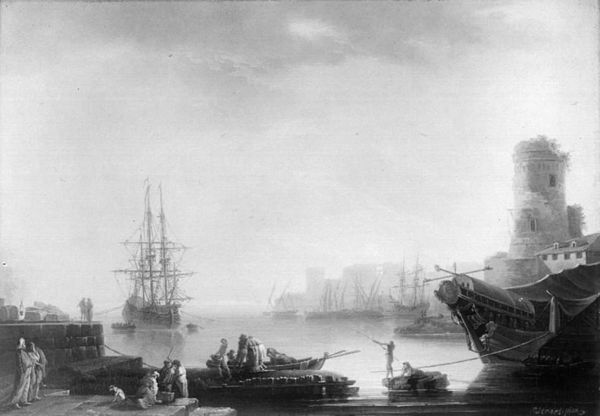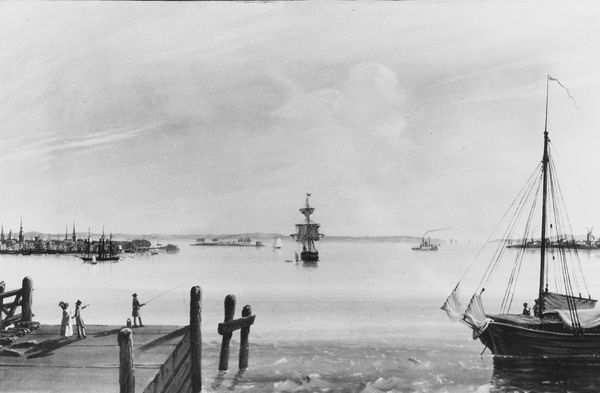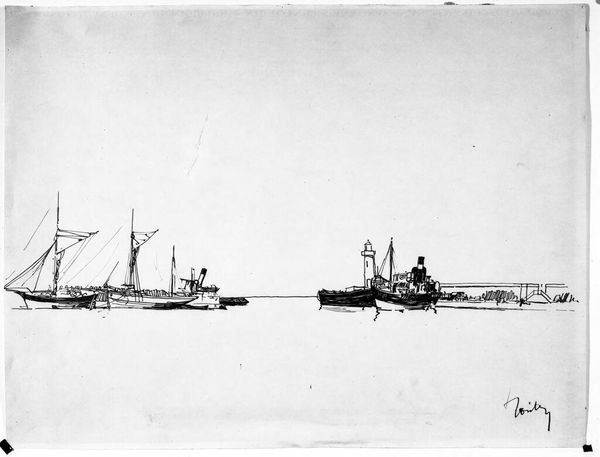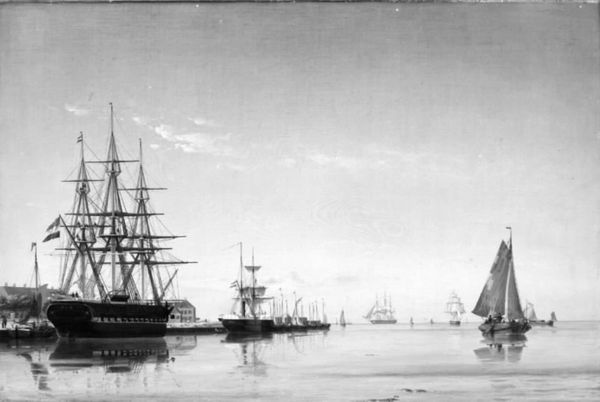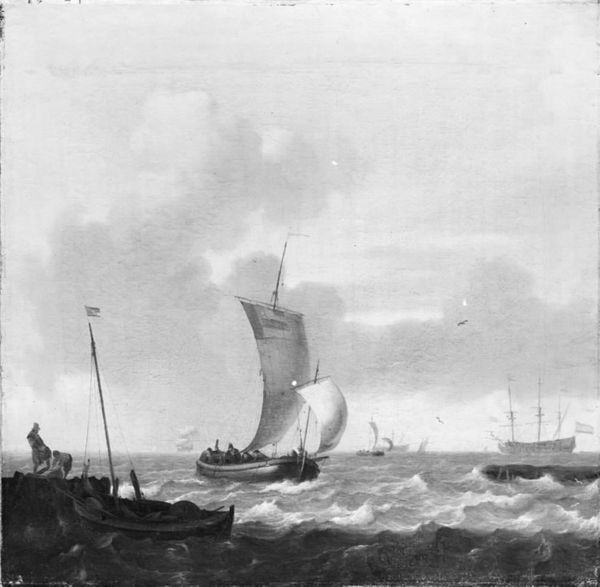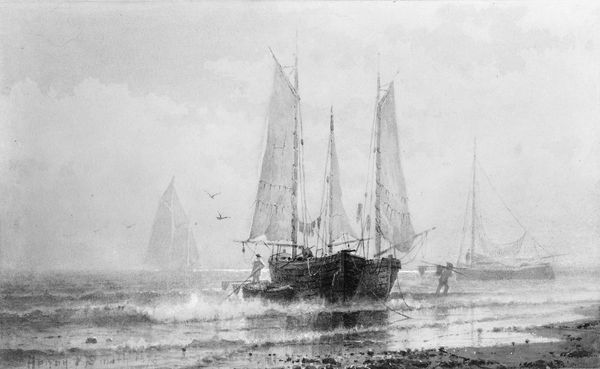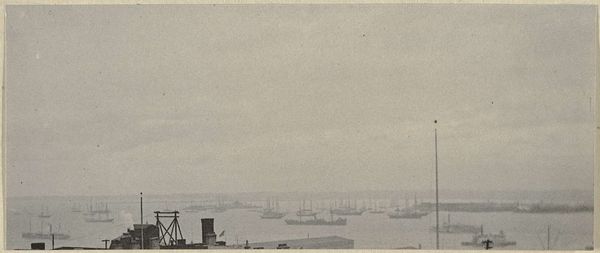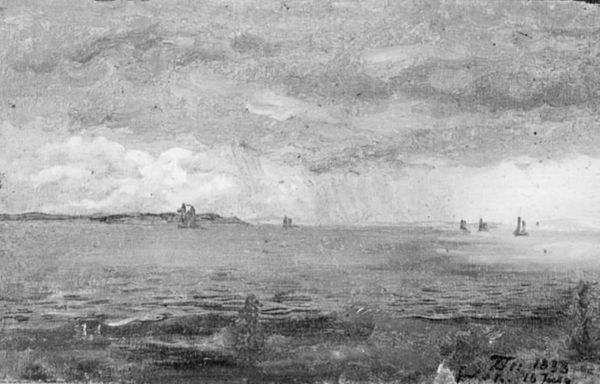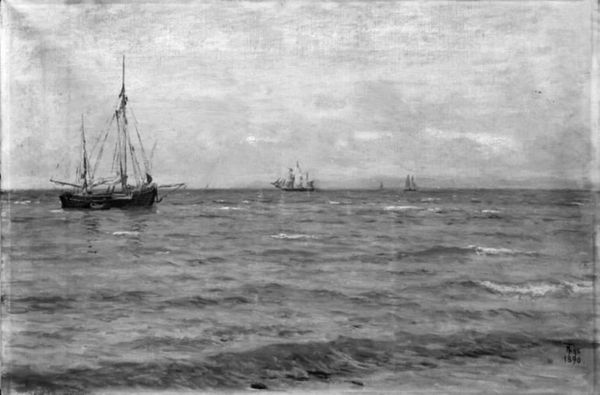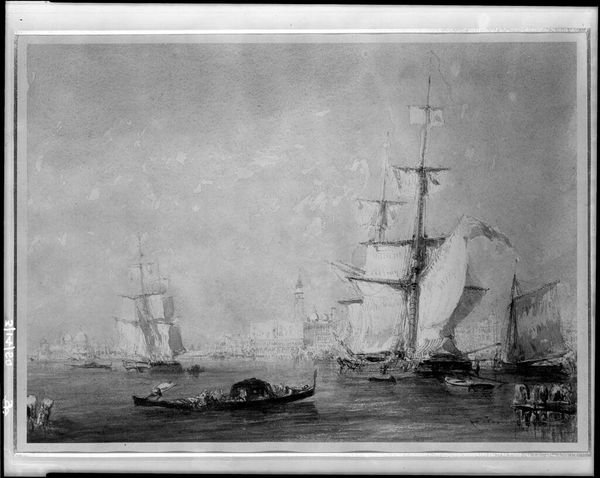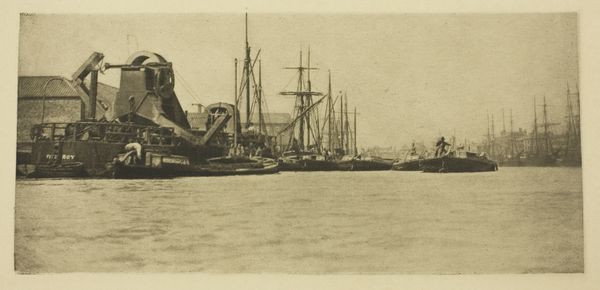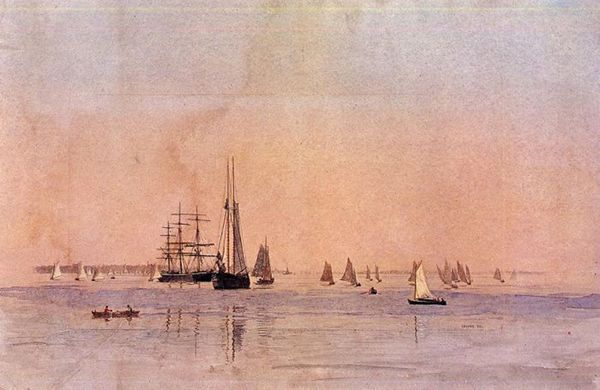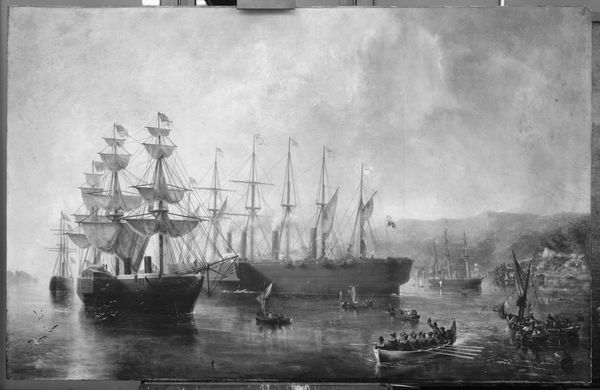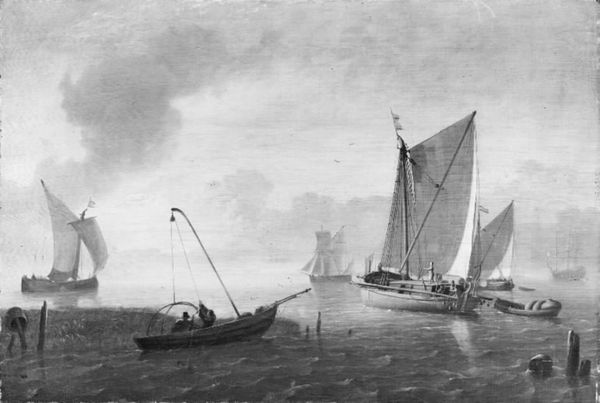
Dimensions: 20 cm (height) x 29 cm (width) (Netto)
Editor: So, this is "Sailing Ships in Misty Weather" by C.F. Sørensen, created sometime between 1833 and 1879. It appears to be a painting, likely "plein-air," judging by the landscape feel. The limited palette evokes a sense of melancholy and the fog really obscures any clear view of... anything, really. What stands out to you in this piece? Curator: What I see is the undeniable influence of material conditions. The grey, muted palette wasn't simply an aesthetic choice. Pigments during this period were often derived from specific minerals and manufacturing processes. Could Sørensen have been limited by available resources, perhaps deliberately evoking the northern climate with locally-sourced materials? Think about how the industrial revolution and global trade influenced the availability and affordability of art supplies. Editor: That's interesting! I hadn’t considered the limitations of accessing various materials. I assumed it was stylistic. Curator: Style is never formed in a vacuum. Consider the ships themselves – these were vessels of trade, potentially instruments of colonial expansion. Sørensen, through the very act of depicting them, engages with the economics of maritime activity. Does the indistinct quality of the ships mirror an obscured history of labor, of exploited resources? What does it mean to represent industry indistinctly? Editor: So, the materials, the subject matter – it’s all interwoven with the economic and social climate of the time. Even the ‘misty weather’ isn’t just atmosphere; it could represent the murky aspects of industrial progress. Curator: Precisely! And look at the ‘plein-air’ tag. To what degree does this speak of a materialist understanding of site and place and an active form of 'field' work on the artist's part? Editor: This really changes how I see it. It’s not just a pretty picture of ships. It's about labor, access, materials, trade, maybe even exploitation. Curator: Exactly. And the beauty, if we can still call it that, lies in the intersection of these material and social forces. I hope we can both look closer and look deeper in future analyses.
Comments
No comments
Be the first to comment and join the conversation on the ultimate creative platform.
